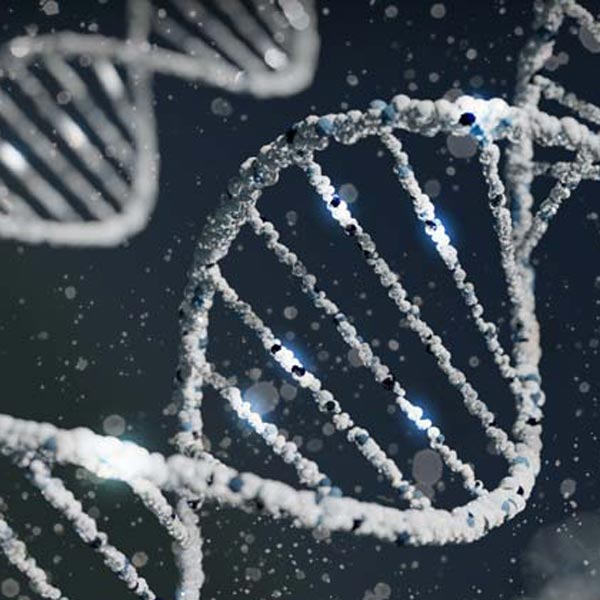Understanding the intricacy of molecules that form the basis of life requires specialized tools.
One such tool is stable isotope-labeled nucleic acids: DNA or RNA strands tagged with isotopes that do not decay over time, and thus provide a vital research aid in molecular biology and biochemistry.
 Stable isotope labeling, combined with various spectroscopic methodologies, reveals the interactions that occur between various biomolecules to investigate scientific questions such as the root cause of diseases.
Stable isotope labeling, combined with various spectroscopic methodologies, reveals the interactions that occur between various biomolecules to investigate scientific questions such as the root cause of diseases.
Here we take a look at stable isotope-labeled nucleic acids, explaining their production, uses, and impact on scientific understanding.
Introducing Isotope-Labeled Nucleic Acids
Stable isotopes are naturally occurring variants of chemical elements that differ in the number of neutrons within their atomic nuclei, resulting in distinct atomic masses. Unlike radioactive isotopes, which undergo spontaneous decay over time and emit radiation, stable isotopes are non-radioactive and do not change or decay over time. This stability makes them safe for use in biological research and medical applications.
Some commonly used stable isotopes in molecular biology typically include 2H, 13C, 15N and 18O. These isotopes have the same chemical properties as their more abundant counterparts, but can be readily distinguished based on their atomic mass, using techniques like NMR and mass spectrometry.
Stable isotope labeling involves the intentional incorporation of stable isotopes into specific atoms or positions within biomolecules, including nucleic acids such as DNA and RNA. The labeled molecules retain their native biological properties but possess unique isotopic signatures that allow them to be distinguished from their unlabeled counterparts.
The Different Types of Isotope Labeling
Several types of stable isotope-labeled RNA and DNA building blocks are available, each with distinct applications in molecular biology research. These include:
rNTPs (Ribonucleoside Triphosphates)
Stable isotope-labeled rNTPs are the building blocks used for the synthesis of RNA molecules. By incorporating stable isotopes, such as 13C and 15N, into rNTPs, researchers can generate labeled RNA molecules for use in a wide range of studies, including transcriptional regulation, RNA folding, and RNA-protein interactions.
dNTPs (Deoxyribonucleoside Triphosphates)
Similar to rNTPs, dNTPs serve as building blocks for DNA synthesis. Labeled dNTPs are used to synthesize isotope-labeled DNA for studies of DNA replication, repair, and dynamics.
Fluoro-rNTPs
Fluoro-rNTPs are modified rNTPs that contain fluorine atoms. Fluorine labeling allows for the study of RNA structure and interactions using 19F NMR spectroscopy, which provides enhanced sensitivity and specificity.
Modified Nucleotides
Stable isotope labeling can be applied to modified nucleotides, such as methylated or acetylated nucleotides, enabling researchers to investigate the impact of nucleotide modifications on nucleic acid structure and function.
Phosphoramidites
Phosphoramidites are stable isotope-labeled precursors used in the chemical synthesis of oligonucleotides. These building blocks allow for the custom synthesis of labeled DNA or RNA oligonucleotides with specific sequences and modifications.
The Uses of Stable Isotope-Labeled Nucleic Acids in Research
Stable isotope-labeled nucleic acids have emerged as powerful tools in molecular biology and biochemistry research, and are used in many applications. By marking DNA or RNA strands with stable isotopes, scientists can meticulously trace their pathways and interactions within cells, thus revealing new insights into life’s fundamental processes.
The use of stable isotope-labeled nucleic acids extends to the study of RNA dynamics – specifically RNA synthesis and degradation. By integrating labeled ribonucleoside triphosphates into new RNA molecules, the lifecycle of specific RNA species can be traced, illuminating the mechanisms of RNA degradation and turnover.
Furthermore, these labeled nucleic acids have been instrumental in studying the interactions between proteins and nucleic acids. Techniques like surface plasmon resonance and nuclear magnetic resonance, combined with labeled nucleic acids, allow researchers to map the sites and strength of protein-nucleic acid interactions, deepening our understanding of DNA replication, RNA processing, and gene regulation.
FAQs
What is Stable Isotope Labeling?
Stable isotope labeling is a technique used in molecular biology and biochemistry where stable (non-radioactive) isotopes are incorporated into molecules. By replacing certain atoms in a molecule with their relative isotopes, scientists can trace a molecule’s pathway and interactions within a biological system. It acts as a sort of molecular ‘tag’, providing valuable insights into biochemical processes such as metabolism, DNA replication, RNA transcription, and protein-nucleic acid interactions.
What are Common Stable Isotopes?
Common stable isotopes used in biological research include carbon-13 (13C), nitrogen-15 (15N), and deuterium (2H or D). These isotopes are non-radioactive, hence ‘stable’, and their unique properties can be detected using techniques such as mass spectrometry or nuclear magnetic resonance, making them ideal for tracking molecules within biological systems.
Why is Isotope Labeling Important?
Isotope labeling is essential for tracing the pathways and interactions of molecules within biological systems. It provides valuable information about a molecule’s role in various processes, from metabolism to gene expression. Moreover, because these isotopes are non-radioactive, they can be safely used in living organisms, allowing real-time studies of biological processes in their natural context, thereby advancing our understanding of life at the molecular level.
How are Isotopes Used in Biological Labeling?
Isotopes are used in biological labeling by incorporating them into the building blocks of biological molecules. For instance, in nucleic acid labeling, isotope-labeled deoxyribonucleotides or ribonucleotides are used in DNA or RNA synthesis, respectively. These labeled molecules can then be tracked using specific detection techniques. By observing their behavior and interactions, researchers gain insights into various biological processes, from DNA replication and transcription to protein-nucleic acid interactions.
About Silantes
At Silantes, we are experts in producing a wide range of stable isotope labeled molecules.
We are excited to offer you a product line that is truly unrivaled in the industry. Whether you need isotope-labeled RNA and DNA building blocks (NTPs and phosphoramidites) or top-notch services for oligonucleotide synthesis.
For RNA and DNA technology products and services, our existing customers choose us because:
- we are uniquely equipped to produce a range of labeling that ensures high purity, and lower costs than our competitors
- of our extensive knowledge of the special requirements for handling stable isotope-labeled reagents in oligonucleotide synthesis
- of our ability to provide optimisation of oligonucleotide synthesis services with respect to minimal use of stable isotopes and small sample sizes.
For researchers and industry professionals interested in harnessing the power of custom RNA/DNA synthesis and stable isotope labeling, we invite you to take the next steps in accessing these services.
Whether you have a specific research project in mind or are simply curious about the possibilities, we encourage you to reach out for more information and explore the services available to you.
Want to learn more about stable isotope-labeled nucleic acids? Read our follow up articles:
- Synthesizing Stable Isotope-Labeled Nucleic Acids
- The Advantages of Using Stable Isotope-Labeled Nucleic Acids
- Applications of Stable Isotope-Labeled Molecules: Exploring the Power of Isotopic Tracers
- Custom RNA & DNA Synthesis Services: Tailored Solutions for Your Nucleic Acid Needs
Alternatively, you can request the pdf version of all of these articles to read at your convenience:
Photo: Sangharsh Lohakare at Unsplash


